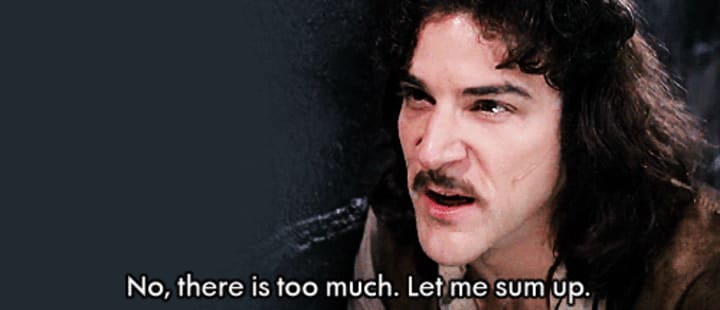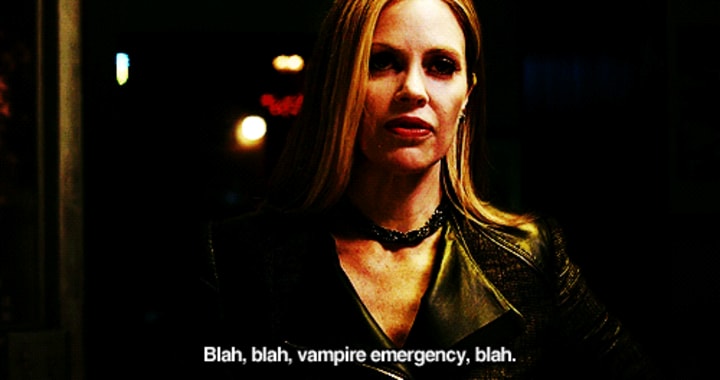
Okay, okay! I admit it. I made the subtitle rift off of "Would You Like To Build A Snowman?" Or for you DP2 lovers, "Father, Can You Hear Me?"
But, as with anything, I had to start somewhere.
Hello, my name is Tamara, and I'm a screen and television writer. I've just started on my journey, but I have been working as a freelance script reader and editor for a year now and found that I enjoy reading scripts and learning more about the craft.
So I decided to start INT/EXT, or the in and out of beginning screenwriting because let's face it, I may like it but I'm learning about all of this, too.
Constantly. With every blasted rewrite.
Damn rewrites.
But back to the subject at hand, screenplays.
So what is a screenplay?
There are many answers to that but the one I like the most is from Lily Gladstone from Crash Course Film Production which she said,
"A screenplay is a written version of a movie... a set of plans to guide the production crew on how to produce a film."
Trust me, it's always interesting to compare the original screenplay to the movie. A script goes through many different hands and people will have ideas that will either enhance your vision or take it down a completely different path, but that's normal for a collaborative environment. Through it all, you get to see all of changes and piece together the decisions that were made to bring the audience the final product.
And if that doesn't scare you then we'll start with the three essential parts of a screenplay: Scene Heading, Narrative Description, and Dialogue.
Scene Heading

Live footage of how the reader feels when slug lines are confusing.
Also called Slug Lines, this is where you introduce your scene or the place you want the story to be shot. It usually goes in the format of PLACEMENT. LOCATION - TIME.
Example:
INT. KITCHEN - DAY
INT. means that the shot is interior, or inside. EXT., or exterior, is the opposite location for that. Even though it is a simple set up, either in or out, some shots that may seem one way will actually be another. (We will discuss those in a different post.)
The second part, KITCHEN, means that you want the character or action to be placed in a kitchen. This can be altered if your scene is specific i.e., INT. GORDON RAMSEY'S HOME - KITCHEN - DAY or INT. GRANDMA PETE'S - KITCHEN - NIGHT but for simplicity sake, we'll start with just a kitchen.
The third section, DAY, means you want the shot placed at a certain time. There are other time differences like EARLY MORNING, EARLY EVENING, DUSK, and DAWN, but the main ones to work off of are DAY and NIGHT.
After you figured out where you want the scene to take place you move onto—
Narrative Description

Please do!
Narrative description is one to four paragraphs describing what's occurring in the scene. Unlike normal prose, the screenwriter’s objective is to give a compact snapshot of the scene. Just like taking a picture there should be enough information to get your idea across, but vague enough to allow other's (actors/directors/etc.) to be creative.
Example:
Dense smoke rises from a frying pan resting on a crowded, messy stovetop. The piercing BEEPS of a smoke alarm spur TAMARA on as she frantically searches for the fire extinguisher.
Now this information would appear right under our slug line. Since we know it's located in a kitchen during the daytime, the description sets up the moment and informs the crew what to expect and extract from this scene.
Like:
- A kitchen that's messy and overcrowded. Controlled fire.
- A smoke alarm that could be located in the scene and used in a shot.
- How to dress the character in the scene. (With food-stained clothes, possibly smudged with flour or other ingredients, and, depending on what else is happening further down the page, maybe other burnt/smoking objects)
- And other things that I might not see at the moment.
Again the standard rule of thumb is 'Show, don't tell.' This means to make sure you don't pack too much unnecessary information in those paragraphs. Submitting works that have half a page with nothing but description text doesn't look good and could potentially bore your reader into giving you a hard pass.
So now you've got the place and explained how the environment will look, now it's time to give your lead a voice. Hence—
Dialogue

'Blah, blah, blah' is perfectly acceptable as first draft dialogue.
Dialogue helps distinguish your characters.
It's broken down into two main parts with some extras if you're feeling frisky.

When formatting dialogue, names will always be capitalized and placed in the center of the page. If you have screenwriting software, it will format it for you.
Underneath the names, you'll place the lines of the character. Normal practice is to keep them between one to four lines and to keep away from orphan dialogue, or one to two-worded answers. You may have a place for a monologue, but if you can break it up a bit and see if it works. One thing you'll learn is that a little goes a long way in screenwriting.
Other formatting tricks used are wrylies, voice over (V.O.), off-screen (O.S.), off camera (O.C.), continued (CONT'D), and subtitled (SUBTITLE). Some of these are important, like V.O and O.S., but depend on where the characters are in a scene, where wrylies are fun but should be used sparingly to not at all.
This may sound easy, but when reading an unproduced script you may find one or two characters sounding the same, and that could be a problem.
It's often said finding your voice, in the beginning, is difficult and it's true. You go through so many filters that sometimes you will copy a favorite artist before hitting your stride but don't let it discourage you.
One thing to remember is finding the character's voice is more than the actor delivering the lines. It's made to work hand in hand with the actions of a character to reveal their true nature and motives in life so knowing your characters could help you quickly find their voice.
That's it for this week. Happy writing, and see you in the credits!
About the Creator
SaviNien
Ex-Games and Web QA Tester, Beginner Screen and TV Writer, Baker, Procrastinator, Lover of Movies
Post for INT/EXT: The blog that gives beginners the ins and outs of screenwriting formatting.






Comments
There are no comments for this story
Be the first to respond and start the conversation.